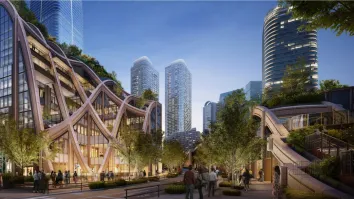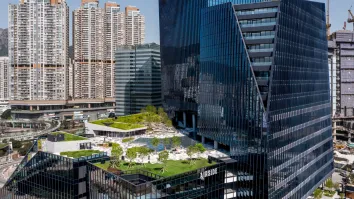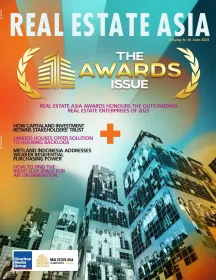
Philippines may see lowest level of completions across all asset classes in years: JLL
Adaptability of real estate stakeholders will play a vital role in pivoting the industry’s challenges into opportunities amidst the declining supply and demand of spaces across all asset classes.
In its quarterly real estate market overview, JLL Philippines discussed the performance of the market during the first half of the year, as well as the emerging trends and strategies that will carry stakeholders through the pandemic.
The event, held in partnership with the British Chamber of Commerce of the Philippines, also covered logistics and data centers, which are an emerging investment opportunity in the country due to the upsurge in e-commerce and other online financial transactions boom due the pandemic.
Supply and demand decline across the board
Following the country’s slowing economic performance—with -16.5% gross domestic product (GDP) growth posted for the second quarter 2020 and 17.7% unemployment rate as of April 2020—the real estate market was impacted to a certain extent..
Supply slippages across all asset classes—office, residential, retail, hospitality, industrial and logistics—underlined the performance of the market for 1Q20 due to halted construction activities.
More than 8,000 units were added to existing Metro Manila residential supply in in the first half of the year, but only 1.3% of which completed in the second quarter. No new retail and hospitality supply has been introduced during the first six months of the year due to the enhanced community quarantine (ECQ), where only select industries were allowed to continue the construction works.
“If this trend persists, the total supply that will be completed this 2020 may be the lowest level of completions we’ve seen in recent years,” said Janlo de los Reyes, JLL Philippines’ Head of Research and Consultancy.
Likewise, demand across all assets classes has also weakened.
Lockdowns implemented in Metro Manila forced businesses to shut down office operations and put expansion and investment plans on hold, increasing the average office vacancy rate by 9.1% in 2Q20. Offshoring and outsourcing firms spearheaded demand in 1H20, as the sector was allowed to operate by the government while under ECQ.
The residential sector was also negatively impacted by the prolonged community quarantine, weakening the residential condominium lease and pre-selling markets of midscale to luxury segments, despite landlords’ openness for term negotiations to improve take-up performance. Average Metro Manila residential rent reached double digit decline of 14.9% quarter-on-quarter to PHP 41,000/month as leasing activities continued to weaken with the prolonged community quarantine.
Store closures have heavily impacted the retail sector. Malls reopened after undergoing modified ECQ at an operating rate of 30% to 90%, as stores opened depending on the tenant. As of 2Q20, vacancy rate inched up at around 5.0% with some stores forced to close permanently due to sales and logistics challenges.
For the hospitality sector, average hotel occupancy rate continued to decline to 21%, 1,600 bps down from the figure recorded last quarter due to bulk bookings leaving the hotels when the region transitioned to general community quarantine. Average occupancy rate in Metro Manila was recorded at 21% in 2Q20, from 36% last 1Q20.
Re-imagining what’s next
Despite the slump experienced in the first half of the year, de los Reyes says emerging real estate narratives are starting to reshape the future of the market.
“In terms of the existing buildings, in the short term, we’re seeing operational changes employed by stakeholders as opposed to physical changes. We are not going to see immediate significant changes in the structures that we have now,” said de los Reyes. “Landlords are more focused on employing extra measures in managing their buildings to cater to changing operation patterns and current health and safety protocols.”
He also says that in the long term, developers may revisit the density of their buildings when the previous trend was to densify spaces to maximize their real estate portfolio. Moreover, sustainability, wellness and technology will be the main themes for future developments to make structures pandemic-proof.
Technology’s impact on real estate also stood out, with migration to digitalization becoming more prevalent as physical interactions are limited and discouraged. “As consumer behavior has changed to become even more digital, retailers have also expanded to online stores and delivery services to cater to consumer demand. What we are seeing now in e-commerce and on-demand services will continue to be the norm moving forward,” says de los Reyes.
What are real estate stakeholders doing now?
Currently, the real estate market is adapting through technology and pivoting towards alternative and interim uses to keep businesses afloat. Indeed, continued flexibility and adaptability will see the market through and beyond the pandemic.
“The market is employing domestic-focused recovery. Retail stakeholders are going hyperlocal for now—they are targeting the community they are located in. Likewise, hospitality is focusing on domestic tourism,” says de los Reyes.
He also shares some stakeholders have taken on more extreme adaptability measures for alternative sources of revenue. This includes temporarily repurposing facilities to other uses, shifting to new revenue sources, and addressing short-term demands such as accommodating front liners for the residential and hospitality sectors to boost occupancy.
“While the traditional asset classes are anticipated to remain challenged for the remainder of 2020, we project some silver linings to emerge that may buoy the real estate market. The real estate investment trust (REIT), emergence of other asset classes such as logistics and data centres, and infrastructure projects are some of the bright spots that may support the recovery of the industry,” de los Reyes says.
“Strong growth in online platforms from cloud computing to social media to gaming and video streaming should drive rapid data center expansion as demand for these services increases,” said Alex Perkins, JLL’s Data Centre Solutions Lead for Asia Pacific who discussed trends and growth drivers of data centers in Southeast Asia, including the Philippines.
Tom Over, JLL Philippines’ Director for Industrial and Logistics, led the discussion on the state of and trends in the country’s logistics sector.
“The logistics sector is currently seen as the evolving asset class in the Philippines, with a number of established developers looking to increase their exposure in the sector. Focus on efficiency, specification, sustainability, and amenities puts the market at a turning point for growth and improvement in quality,” he continues.


















 Advertise
Advertise


